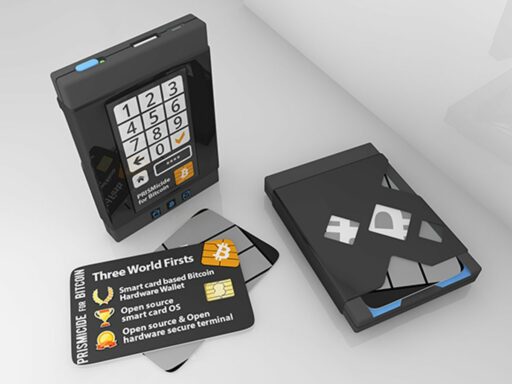In the ever-evolving landscape of cryptocurrency, crypto mining simulators have carved out a niche, offering enthusiasts a blend of gaming and education. These simulators provide a virtual environment where users can experience the thrills of crypto mining without the associated real-world costs and complexities. This review delves into the latest crypto mining simulator, examining its mechanics, economic implications, user experience, security measures, and future prospects.
Key Takeaways
- Crypto mining simulators offer an accessible platform for users to understand the intricacies of cryptocurrency mining through virtual gameplay.
- The simulators balance education and entertainment, potentially impacting real-world cryptocurrency understanding and investment strategies.
- User experience is crucial in crypto mining games, with interface design, community engagement, and reward systems playing significant roles.
- Security and fairness within these simulators are paramount to maintain user trust and prevent exploitation, reflecting issues in the broader crypto space.
- Future developments in crypto mining simulators may include advanced blockchain integration and the use of NFTs, shaping the trajectory of crypto gaming.
Exploring the Mechanics of Crypto Mining Simulators

Understanding the Virtual Mining Process
At the heart of every crypto mining simulator lies a virtual mining process, designed to emulate the complexities of real-world cryptocurrency mining. Players engage in activities such as setting up mining rigs, choosing cryptocurrencies to mine, and managing resources to maximize their virtual earnings. The process is simplified compared to actual mining, but retains key elements that educate players on the underlying mechanics.
- Setting up virtual mining rigs: Players select hardware, balance power consumption, and optimize performance.
- Choosing cryptocurrencies: Decisions must be made on which virtual coins to mine, each with their own difficulty and reward structure.
- Resource management: Strategic allocation of virtual resources is crucial for efficient mining and profitability.
The virtual mining process in simulators offers a risk-free environment to understand the intricacies of mining without the need for expensive equipment or technical knowledge. It’s a digital gold rush that provides insight into the world of cryptocurrency without the financial stakes of real mining operations.
Comparing Real-world Mining vs. Simulation
At the heart of both real-world and virtual crypto mining lies the blockchain technology. However, the resemblance ends there, as the two diverge significantly in terms of process, cost, and environmental impact. Real-world mining requires substantial hardware investment, consumes vast amounts of electricity, and has a tangible environmental footprint. In contrast, crypto mining simulators are designed to emulate these processes without the physical hardware or energy consumption.
- Real-world Mining:
- High initial hardware cost
- Significant electricity usage
- Real economic and environmental impact
- Simulation:
- No hardware investment
- Minimal to no electricity cost
- Virtual impact with no real-world consequences
The simulation offers a risk-free environment to understand the dynamics of mining, making it accessible to a wider audience. It’s a strategic playground where every decision and action has a lasting impact, without the financial and ecological concerns associated with actual mining operations.
The Role of Strategy in Maximizing Virtual Gains
In the realm of crypto mining simulators, strategy plays a pivotal role in maximizing virtual gains. Players must make informed decisions on how to allocate resources, upgrade equipment, and manage their virtual mining operations to optimize earnings. Here are some strategic considerations:
- Resource Management: Balancing the investment in virtual mining equipment with the operational costs.
- Upgrades and Expansion: Deciding when and what to upgrade to boost mining efficiency.
- Market Analysis: Keeping an eye on the virtual cryptocurrency market to sell at peak values.
Success in these simulators is not just about the grind; it’s about making smart choices that compound over time to build virtual wealth.
Understanding the intricacies of the game mechanics and the virtual economy is essential. Players who grasp the nuances of the virtual market can better strategize their play to earn more in-game currency or even real crypto, as some games offer this possibility. The key is to stay informed and adapt strategies to the ever-changing virtual landscape.
The Economic Implications of Virtual Mining
Monetization Models in Crypto Gaming
In the dynamic world of crypto gaming, monetization strategies are as varied as the games themselves. Developers are constantly innovating to create sustainable revenue streams while providing value to players. One prominent model is the integration of in-game purchases, where players can buy virtual goods or currency to enhance their gaming experience.
Another increasingly popular model is the Player-to-Earn (P2E) system, which allows players to accumulate real-world value through gameplay. This model has been gaining traction, particularly with the rise of blockchain-based games that offer unique digital assets like NFTs. These assets can be traded or sold, providing a tangible financial incentive for players.
The convergence of gaming and finance has led to the creation of ecosystems where players are not just consumers but also stakeholders in the game’s economy.
Lastly, subscription models and advertising are also common, with some games offering premium features or content for a recurring fee, and others displaying ads to generate revenue.
Impact on Real Cryptocurrency Markets
The surge of interest in crypto mining simulators has an intriguing ripple effect on actual cryptocurrency markets. Virtual mining activities can influence real-world trading behaviors, as players often draw parallels between the simulated environment and the actual markets. This can lead to increased speculation and volatility in cryptocurrencies, as seen in various market movements over the past year.
While the direct impact of simulators on market prices is debatable, the indirect effects, such as heightened awareness and engagement with cryptocurrencies, are undeniable.
The following points highlight the potential influences of crypto mining simulators on real cryptocurrency markets:
- Simulators may act as a gateway for new investors, increasing market participation.
- They can create a feedback loop where virtual gains encourage real-world investment.
- The games might affect the perception of market trends and investor sentiment.
Understanding these dynamics is crucial for both gamers and investors, as the lines between virtual and actual wealth continue to blur.
Virtual Mining and Its Educational Value
Crypto mining simulators are not just about entertainment; they serve as a potent educational tool. Players engage with complex economic principles in a risk-free environment, learning about cryptocurrency markets and investment strategies. This gamified learning approach has been shown to enhance understanding and retention of financial concepts.
- Understanding Cryptocurrency: Players learn the basics of digital currencies.
- Market Analysis: Simulations provide insights into market trends and behaviors.
- Investment Strategies: Players experiment with various investment approaches.
- Risk Management: Virtual mining teaches the importance of managing financial risk.
In the simulated world of crypto mining, every decision can lead to a deeper understanding of the real-world cryptocurrency landscape. Players not only get to simulate the mining process but also experience the thrill of trading and portfolio management.
The educational value of these simulators is further highlighted by their ability to translate complex financial knowledge into accessible gameplay. This is particularly beneficial for those new to the world of cryptocurrency, providing a foundation that can be built upon with real-world experience.
Navigating the User Experience in Crypto Mining Games

Gameplay Interface and Ease of Use
The allure of crypto mining simulators lies not just in the potential virtual riches but also in their accessibility and user engagement. A well-designed interface is crucial, as it allows players of all levels to navigate the game’s features with ease. For instance, the recent buzz around the title ‘Unveiling the 5 Best Free Crypto Mining Apps Set to Go Viral in 2024’ underscores the importance of combining user-friendly interfaces with powerful features.
Key aspects of a good user interface include clear instructions, intuitive layout, and responsive design. These elements contribute to a seamless gaming experience:
- Clear instructions ensure that players understand the game mechanics without confusion.
- An intuitive layout allows for quick navigation through different sections of the game.
- Responsive design adapts to various devices, providing a consistent experience whether on a desktop or mobile.
The goal is to minimize frustration and maximize enjoyment, turning every interaction within the game into a smooth and rewarding journey.
Feedback from the gaming community often highlights the importance of these features. For example, players have praised the responsive support team in games like IguVerse, which is essential for addressing any issues that arise. Meanwhile, the commitment to avoiding pay-to-win models, as seen in games like 9LA, ensures fairness and keeps the focus on skill and strategy.
Community and Multiplayer Aspects
The heart of any crypto mining simulator is not just the algorithms or the virtual rigs, but the vibrant community that forms around it. Players often find the collaborative elements just as rewarding as the gameplay itself. From forming alliances to sharing resources, the social dynamics can significantly enhance the gaming experience.
- Collaborative spirit: Working with others contributes to a shared vision and collective success.
- Building networks: Establishing alliances and guilds is crucial for climbing leaderboards and achieving in-game goals.
- Socializing to earn: Engaging with the community can be incentivized, adding a layer of interaction beyond the game.
The essence of multiplayer gaming in crypto simulators lies in the shared journey towards virtual prosperity. It’s not just about the mining; it’s about the relationships and strategies developed along the way.
The multiplayer aspect also introduces a competitive edge, where players can join forces or compete against each other in various in-game events. This not only fosters a sense of camaraderie but also drives the game’s economy, as players trade, lend, and strategize to gain an upper hand.
Rewards System and Incentivization
In the realm of crypto mining simulators, the rewards system is not just a pat on the back; it’s a sophisticated mechanism designed to incentivize players and sustain the virtual economy. The allure of quantum rewards in games like PlanetQuest underscores the importance of player activity and collaboration, as it directly influences the passive earnings from owned NFTs.
The strategic positioning of fighters and the victories in battles are not just for glory but also pave the way for tangible rewards. These rewards manifest as equipable items, unlocking new strategic possibilities and enhancing the gaming experience.
The integration of tokenomics is crucial in these virtual economies. For instance, in "Heroes of NFT," the interplay between NFT assets, $HON tokens, and $HRM tokens creates a self-contained economic system. Players can earn these tokens and assets through gameplay, which can then be traded on the marketplace, contributing to the game’s economy and player engagement.
- Marketplace Dynamics: Keep an eye on trends to capitalize on supply and demand.
- Player Engagement: Active participation can lead to governance tokens and a say in the game’s direction.
- Strategic Gameplay: Victories in battles yield rewards, incentivizing skillful play.
The rewards system in crypto mining simulators is not just about earning but also about creating a dynamic community where players are rewarded for their strategic acumen and economic wisdom.
Security and Fairness in Crypto Mining Simulations

Ensuring Safe Transactions Within the Game
In the realm of crypto mining simulators, the security of in-game transactions is paramount. Ensuring the safety and integrity of digital transactions is not just about preserving user trust; it’s about maintaining the competitive balance and fairness that are central to the gaming experience. Developers employ a variety of techniques to safeguard these transactions, including the use of multi-signature wallets and two-factor authentication.
To further fortify transaction security, some games are exploring the use of Zero Knowledge Proofs (ZKPs). ZKPs allow for the validation of transactions without revealing sensitive information, thus preserving player privacy. However, it’s crucial to be aware that hacked zero knowledge proof generators can lead to the approval of invalid transactions, which poses a significant risk to the game’s economy.
The integration of advanced security measures is essential in creating a new paradigm of play-to-earn gaming experiences. It not only protects players but also enhances the overall credibility of the virtual economy.
Here are some essential tips for players to stay safe in the virtual mining world:
- Always use secure and unique passwords for your gaming accounts.
- Enable two-factor authentication whenever possible.
- Be vigilant about phishing attempts and suspicious links.
- Regularly update your gaming software to patch any security vulnerabilities.
Preventing Exploits and Cheating
In the realm of crypto mining simulators, preventing exploits and cheating is paramount to maintaining a fair and competitive environment. Developers employ various strategies to ensure the integrity of their games:
- Regular updates and patches to address vulnerabilities.
- Advanced encryption to protect user data and in-game transactions.
- Two-factor authentication (2FA) for securing user accounts.
- Real-time monitoring systems that detect and prevent automated bot activity.
Ensuring a level playing field is not just about fairness; it’s about sustaining the game’s economy and the trust of its players.
The use of blockchain technology has been proposed as a robust solution to these challenges. A blockchain-based system can provide real-time cheat prevention and significantly increase the robustness of the game against attacks, such as DDoS. This approach aligns with the broader gaming industry’s issues, including cheating and server attacks.
Transparency and Trust in Virtual Economies
In the burgeoning world of crypto mining simulators, transparency and trust are paramount. Players need assurance that the virtual economies they invest time and resources into are fair and transparent. This is not just about the integrity of in-game transactions, but also about the confidence in the game’s developers and the systems they put in place to prevent manipulation.
The essence of trust in virtual economies hinges on clear rules and consistent enforcement. Without these, the risk of exploitation and loss of player engagement increases.
To foster this trust, developers often implement features such as:
- Publicly visible transaction logs
- Regular audits of in-game economic activities
- Clear terms of service and fair use policies
Ensuring that these measures are not only in place but also effectively communicated to players is crucial for maintaining a healthy virtual economy. As the line between virtual and real assets continues to blur, the importance of these trust-building measures only grows.
The Future of Crypto Mining Simulators
Emerging Trends and Innovations
The landscape of crypto mining simulators is rapidly evolving, with new technologies paving the way for unprecedented advancements. From the integration of quantum computing to the infusion of artificial intelligence, miners are navigating a landscape where processing power and efficiency are paramount.
Emerging trends such as AI-driven decision-making and VR-enhanced environments are creating more immersive and strategic gameplay. Industry pioneers are leveraging these technologies to offer gamers a deeper, more engaging experience. For instance, the introduction of league-based changes in games like Wild Forest ensures fair and balanced competition, while The Beacon’s "New Frontiers Quest" pushes the boundaries of in-game exploration and achievement.
The fusion of blockchain technology with gaming is leading to innovative play-to-earn models, where players can reap real economic benefits from virtual mining activities.
As the virtual and real economies continue to intertwine, these simulators serve not only as entertainment but also as a platform for education and investment in the burgeoning crypto market.
Integration with Blockchain and NFTs
The integration of blockchain technology and Non-Fungible Tokens (NFTs) into crypto mining simulators is a game-changer, offering players a unique blend of gaming and investment. Blockchain ensures the security and integrity of digital transactions, transforming the gaming experience into one that can yield real economic benefits.
- Earn While You Play: Blockchain and NFTs enable a new paradigm of play-to-earn gaming experiences.
- True Ownership: Players can own limited-edition items as NFTs, ensuring true ownership and the potential for profit.
- Innovative Ecosystems: Games like 9Lives Arena introduce unique features such as Spirit Hunters and Immortals, adding depth and complexity to gameplay.
The convergence of blockchain and NFTs with gaming simulators signifies a pivotal shift towards immersive, rewarding, and personalized gaming ecosystems.
This integration not only enhances the user experience but also paves the way for a sustainable economic model within the game, where players can earn real rewards by playing games. It’s a compelling approach that marries entertainment with tangible value creation, making it an attractive feature for both gamers and investors alike.
Predictions for the Evolution of Crypto Gaming
As we stand on the brink of 2024, the crypto gaming landscape is poised for transformative growth. The integration of play-to-earn models and blockchain technology heralds a new era where digital ownership and sustainable ecosystems become the norm. This shift is not just about entertainment; it’s about exploring the future of currency within the gaming realm.
- The rise of play-to-earn games that reward players with real value.
- Greater emphasis on digital ownership through NFTs and in-game assets.
- Enhanced player engagement with immersive and personalized gaming experiences.
- Increased investment in crypto gaming, despite market volatility.
The convergence of AI and blockchain technology signifies a pivotal shift towards more immersive, rewarding, and personalized gaming ecosystems.
Looking ahead, we can expect to see a continued influx of investment into crypto gaming. This will likely fuel innovation, with developers pushing the boundaries of what’s possible in virtual economies. The challenge will be to balance speculative excitement with sustainable growth, ensuring that the evolution of crypto gaming is both profitable and player-centric.
Conclusion
In the ever-evolving landscape of cryptocurrency, the latest Crypto Mining Simulator offers a unique blend of entertainment and education. It stands as a testament to the innovative ways the crypto community continues to engage and expand its audience. While it may not yield real-world riches, this simulator provides valuable insights into the complexities of mining and the thrill of the crypto economy without the associated risks. As we’ve seen with the rise of play-to-earn games and the integration of crypto in online platforms, the line between virtual and actual value is increasingly blurred. Whether you’re a seasoned miner or a curious newcomer, this simulator is a safe and enjoyable way to explore the intricacies of cryptocurrency mining. As the digital realm grows, it’s clear that such simulations will continue to play a significant role in educating and entertaining users, while perhaps inspiring the next generation of crypto enthusiasts.
Frequently Asked Questions
What is a crypto mining simulator?
A crypto mining simulator is a type of video game that replicates the process of cryptocurrency mining. Players can experience the mechanics of mining, including setting up rigs, managing resources, and trading virtual currencies without the need to invest in real-world hardware.
How does virtual mining compare to real-world mining?
Virtual mining in simulators is a simplified and risk-free version of real-world mining. It doesn’t require expensive equipment, consumes no actual electricity, and there’s no need for technical knowledge. However, it also doesn’t result in earning real cryptocurrencies unless the game has a monetization model that rewards players with real assets.
Can playing crypto mining simulators impact real cryptocurrency markets?
Crypto mining simulators typically have no direct impact on real cryptocurrency markets as they use virtual currencies within the game environment. However, they can influence market interest by educating players and potentially encouraging them to participate in actual crypto mining or trading.
What are the common monetization models in crypto mining games?
Monetization models in crypto mining games may include in-game advertisements, microtransactions for virtual goods, subscription services, or the sale of in-game currency. Some games may also offer rewards in real cryptocurrencies, integrating play-to-earn mechanics.
How do crypto mining simulators ensure fairness and security?
Crypto mining simulators ensure fairness by implementing anti-cheat systems, regular updates to prevent exploits, and transparent rules. Security can be maintained through encrypted transactions, secure login methods, and by following best practices for data protection.
Are there educational benefits to playing crypto mining simulators?
Yes, crypto mining simulators can provide educational benefits by familiarizing players with the basics of cryptocurrency mining and blockchain technology. They can also help users understand market dynamics and trading strategies in a risk-free environment.





